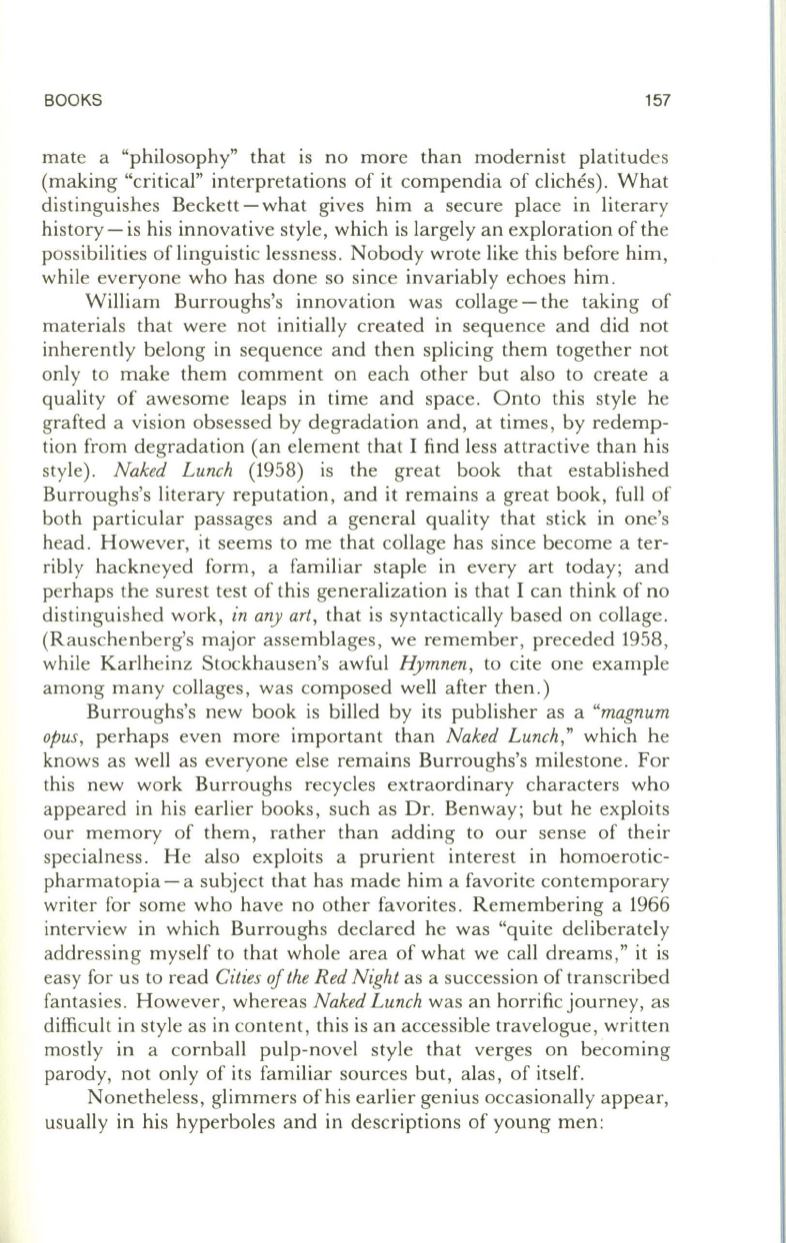
BOOKS
157
mate a "philosophy" that is no more than modernist platitudes
(making "critical" interpretations of it compendia of cliches). What
distinguishes Beckett - what gives him a secure place in literary
history-is his innovative style, which is largely an exploration of the
possibilities of linguistic lessness. Nobody wrote like this before him,
while everyone who has done so since invariably echoes him.
William Burroughs's innovation was collage - the taking of
materials that were not initially created in sequence and did not
inherently belong in sequence and then splicing them together not
only to make them comment on each other but also to create a
quality of awesome leaps in time and space. Onto this style he
grafted a vision obsessed by degradation and, at times , by redemp–
tion from degradation (an element that I find less attractive than his
style).
Naked Lunch
(1958) is the great book that established
Burroughs's literary reputation, and it remains a great book, full of
both particular passages and a general quality that stick in one's
head . However, it seems to me that collage has since become a ter–
ribly hackneyed form, a familiar staple in every art today; and
perhaps the surest test of this generalization is that I can think of no
distinguished work,
in any art,
that is syntactically based on collage.
(Rauschenberg's major assemblages, we remember, preceded 1958,
while Karlheinz Stockhausen's awful
Hymnen,
to cite one example
among many collages, was composed well after then.)
Burroughs's new book is billed by its publisher as a
"magnum
opus,
perhaps even more important than
Naked Lunch,"
which he
knows as well as everyone else remains Burroughs's milestone . For
this new work Burroughs recycles extraordinary characters who
appeared in his earlier books, such as Dr. Benway; but he exploits
our memory of them, rather than adding to our sense of their
specialness. He also exploits a prurient interest in homoerotic–
pharmatopia - a subject that has made him a favorite contemporary
writer for some who have no other favorites . Remembering a 1966
interview in which Burroughs declared he was "quite deliberately
addressing myself to that whole area of what we call dreams," it is
easy for us to read
Cities oj the Red Night
as a succession of transcribed
fantasies. However, whereas
Naked Lunch
was an horrific journey, as
difficult in style as in content, this is an accessible travelogue, written
mostly in a cornball pulp-novel style that verges on becoming
parody, not only of its familiar sources but, alas, of itself.
Nonetheless, glimmers of his earlier genius occasionally appear,
usually in his hyperboles and in descriptions of young men:


